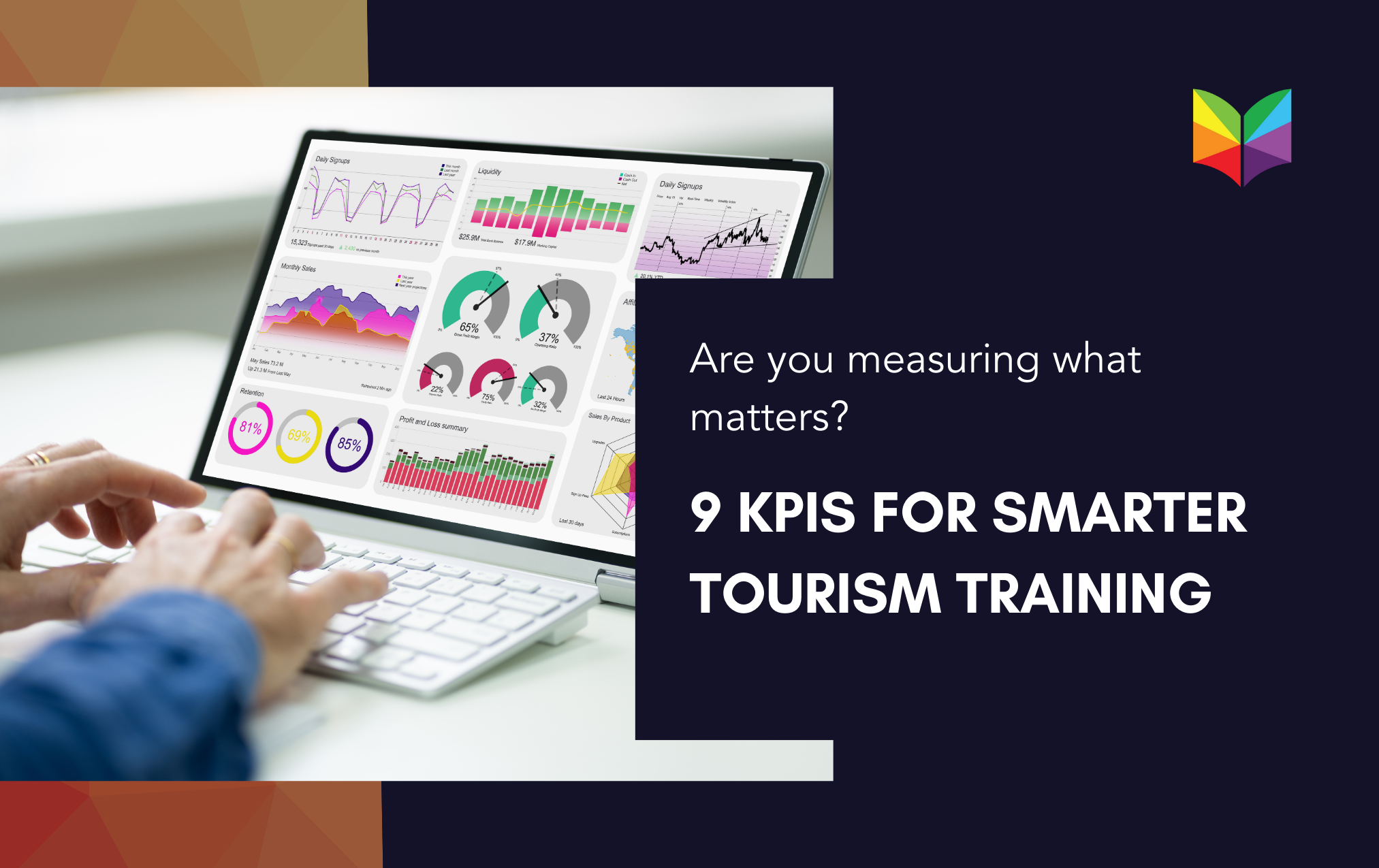
9 KPIs for Smarter Tourism Training
Are You Measuring What Matters? 9 KPIs for Smarter Tourism Training
Destination marketing leaders and trade associations understand the value of professional development. But investing in training isn’t enough, you’ve got to measure its impact.
Whether you're launching a new tourism ambassador program or scaling member education across your region, meaningful KPIs (Key Performance Indicators) help ensure your learning initiatives drive real results. At Learn Tourism the nonprofit academy, we believe data-backed training isn’t just smart—it’s sustainable, scalable, and essential.
Here are 9 KPIs every tourism executive should track to make training count.
1. Completion Rate
This foundational metric shows how many learners actually finish the training. High completion rates indicate that your course is accessible, engaging, and relevant—critical if you want frontline workers and partners to stay informed.
✅ Pro Tip: Pair bite-sized modules with mobile access to boost completion.
2. Enrollment Rate
How many people are signing up for your course? If enrollment is low, the issue may be awareness, not interest. This KPI helps assess your marketing effectiveness and audience outreach.
✅ Pro Tip: Integrate your course link with CRM systems, partner platforms, and social campaigns for wider reach.
3. Engagement Levels
How much time are users spending in the course? Are they clicking, commenting, and interacting? Measuring this gives you insight into user experience. The more engaged learners are, the more likely they’ll retain and apply the content.
✅ Pro Tip: Include storytelling, local examples, and interactive elements to drive engagement.
4. Knowledge Retention
Don’t just test for right answers, test for long-term understanding. Pre- and post-course quizzes, real-life scenarios, and simulated decision-making tasks offer a clear picture of how well learners are absorbing and retaining key insights.
✅ Pro Tip: Reinforce retention with follow-up activities like trivia, challenges, or learning nudges.
5. Satisfaction Score
How do learners feel about your training? A simple feedback survey can uncover valuable insights into what’s working (and what’s not). This helps you continuously improve course design and content relevance.
✅ Pro Tip: Ask open-ended questions to surface unexpected improvement opportunities.
6. Certification Rate
How many learners not only finish but also earn a certificate? For DMOs and associations, high certification rates enhance credibility and demonstrate a tangible return on investment.
✅ Pro Tip: Celebrate certified champions in newsletters, social media, and at events to build advocacy.
7. Performance Impact
Are your learners applying what they’ve learned? Look at customer feedback, service improvements, or increased visitor satisfaction. This is where training translates into better destination experiences.
✅ Pro Tip: Collaborate with tourism stakeholders to track shifts in service delivery or local pride.
8. Time to Completion
How long does it take learners to complete your course? A lengthy course may cause drop-off, while one that’s too short may sacrifice quality. Balance is key.
✅ Pro Tip: Segment content into digestible learning paths that fit busy schedules.
9. Cost per Learner
As stewards of public and partner funds, it’s critical to know how much training costs per participant. With online, on-demand courses from Learn Tourism, you reduce overhead while increasing scalability.
✅ Pro Tip: Use this data to secure funding, grants, and stakeholder buy-in for future programs.
Why These KPIs Matter for Tourism Leaders
You’re not just training employees—you’re building regional pride, improving visitor experiences, and strengthening economic resilience. KPIs help you:
-
Make data-informed decisions
-
Prove program ROI to boards and funders
-
Identify gaps and opportunities
-
Scale successful programs across partners and communities
When destination education is designed with adult learning science and measured with purpose, your organization becomes a leader not only in marketing, but in legacy.